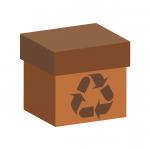
On 28 February 2020 the Ministry of Natural Resources and Environment of the Russian Federation (Minprirody) proposed a draft concept for reforming the system of extended producer and importer responsibility for consumer goods and packaging.
The “extended responsibility of product and packaging producers and importers” (EPR) is defined as the economical mechanism where manufacturers and importers of goods and packaging are obliged to ensure utilisation (recycling) o such goods and packaging after they have lost their consumer properties (i.e. have become “waste”).
The main instrument for the extended producer responsibility is the environmental charge that is payable by manufacturers of goods and packaging, as well as retail enterprises, and aimed at organizing the collection, processing, transportation and disposal of secondary resources reused in the production of goods and packaging.
The purpose of imposing the environmental charge on packaging manufacturers is to stimulate packaging production with the maximum use of secondary resources.
The purpose of imposing the environmental charge on manufacturers of goods and retailers is to encourage them to reduce the amount of packaging they are using as well as the use of packaging made from recycled materials and easily recyclable packaging.
The purpose of reforming the existing system is to increase its effectiveness and to remove its shortcomings. For example, the current system is based on self-declarations made by producers and importers. The competent authority (Rosprirodnadzor) does not have the information about all producers and importers which means that quite a few of them fail to submit yearly reports or are reporting inaccurate data.
The draft concept aims to solve the existing problems by:
- centralising the management of the system and increasing the administrative control mechanisms;
- create clear rules that stimulate the use of recycled goods and packaging manufactured with the use of recycled materials and ensuring the return of investments into creation of facilities collecting, treating and recycling secondary raw materials;
- stimulating the population for separate collection and disposal of wastes.
There are some practical measures that have been proposed to stimulate the secondary usage of resources.
1. Payment of the environmental charge on packaging
The environmental charge is to be paid for the total weight of packaging put into circulation (100% recycling rate). The list of products considered “packaging” and subject to the environmental charge is to be adopted by the Government of the Russian Federation.
The payer of the environmental charge on packaging is the packaging manufacturer. Environmental charge s paid every six months based on the volume of packaging sold.
When calculating the amount of environmental tax for the weight of packaging, which serves as the basis for the calculation, the weight of secondary resources used for the production of this packaging is to be deducted.
Packaging can only be called as being “made from secondary resources” if it contains a certain minimum quantity of secondary resources, as set by the Government of the Russian Federation.
2. Payment of the environmental charge on products
The environmental charge is to be paid for the total weight of goods released into circulation and subject to utilisation (recycling). The list of goods subject to the payment of the environmental charge is to be established by the Government of the Russian Federation. The Ministry of Natural Resources recommends to switch to the new system of relations starting with the following product groups:
- batteries and mercury lamps;
- electronics; and
- car tires.
The revenues from charging the environmental charge for the respective type of goods should fully cover the costs associated with the entire cycle of waste management from the use of this type of goods, including collection, transportation, processing, disposal and, if it is not possible to dispose of, the disposal of such waste.
The transition to the new system of relations in relation to goods is to be implemented in the period from 2022 to 2024. Prior to the transition to the new system for goods for which an environmental charge is charged, the utilization (recycling) rates are to be increased to 100%.
3. Payment of the environmental charge for imported and exported products and packaging
The importers and manufacturers of products and packaging are to pay the environmental charge for the actual import of goods and packaging into the territory of the Russian Federation - simultaneously with the payment of customs duties.
In order to simplify the calculation of the environmental charge from the packaging of goods imported in this packaging, the estimated weight of the package and the estimated value of the environmental charge are established by the nomenclature of such goods. In this case, the importer has the right to calculate the cost of the environmental fee based on the actual weight of the packaging, subject to the provision of documents confirming the use of the declared amount of packaging.
When exporting goods, including goods in packaging, the amount of the environmental charge already paid in relation to these goods and packaging is to be reimbursed.
4. Implementation of the revised concept
The draft concept is likely to be implemented in several stages.
The first stage includes creation of the Russian Environmental Charge Operator and implementation of the concept provisions related to packaging. The implementation of the new approach for packaging can already begin on 1 July 2021 (according to the draft Concept).
At the second stage, the reform will start applying applies to products with a gradual expansion of the range of goods in respect of which a new approach is applied.
During this period, the Extended Producer Responsibility Foundation (the ROP Foundation) is also created and the information system is modernized. The second stage of the Concept is to be implemented from 2022 to 2024.
In the transition to a new mechanism for the implementation of the extended responsibility of producers, it is necessary to take into account the investments made by the producers of goods in creating the infrastructure for waste management, providing for the possibility of offsetting the invested funds against the payment of the environmental charge.





